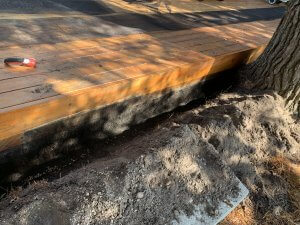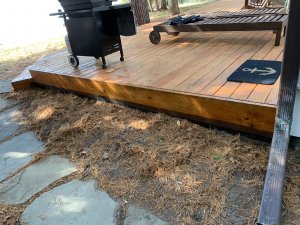The stoat, also known as the ermine (or the short-tailed weasel) is a mammal native to Eurasia and North America, distinguished from the weasel by its more substantial body and longer tail with a noticeable black tip. Originally from Eurasia, ermine crossed into North America some 500,000 years ago, where they naturalized and joined the closely related, native long-tailed weasel.
The name ermine is for any species in the genus Mustela, most notably the stoat, identified by its pure white coat in the winter months. In the late 19th century, stoats were first introduced into New Zealand to control rabbits, where they have since had a devastating effect on native bird populations.
Appearance
At its full adult size, an ermine’s total body length from crown to rump will be about 6.5 inches to 13 inches. Males are typically twice as large as their female counterparts. The tail length is, in most cases, about 35% of an ermine’s total body length, ranging from 2 inches to 5 inches. They have the classic weasel form: lengthy body, squat legs, long neck supporting a triangular head, slightly protruding round ears, bright black eyes, and long whiskers. Their short, moderately fine fur is white in the winter, and the tip of the tail is black. In the summer, the fur on the back is chocolate brown, while the fur on the belly extending to the upper lip is yellowish-white.
Where do they live?
Ermine are distributed around the northern part of the world. They are found in the temperate regions of Eurasia and North America and are absent from the Great Plains.
They prefer woodlands near marshes, rivers, shrubby fences, and open areas adjacent to forests. Although ermine reside primarily on the ground, they swim well and can climb trees.
Ermine make their dens in hollow logs, tree roots, rodent burrows, and holes stone walls. Most commonly, these dens are nearly a foot below ground. Ermine will line their nests with fur and feathers from their prey, and dry plant material. Burrows will have side cavities that are used for storing food and as bathrooms.
Reproduction
Both male and female ermine will have many different mates throughout their lives. They will mate in the late spring to early summer months, with females producing only one litter each year. Their young are born in April to May, after an average pregnancy of 280 days; this includes an 8 to 9 month time period in which the offspring are dormant More hours of daylight beginning in March trigger the young to start their development. Litter size will range anywhere from 3 to 18 offspring but averages 4 to 9. The young are born blind and helpless, and are covered with fine white hair; a prominent, dense mane of dark fur develops around the neck by their third week (the function of which is unknown).
The young grow quickly and can hunt with their mothers within eight weeks. Although females do not reach their full adult size until a least six weeks after birth, they can mate when they are only 60 to 70 days old, which is often before they are even weaned, whereas males do not breed or grow to adult size until their second summer. Only the female ermine care for the young— they nurse and protect them until they can achieve independence.
Females may survive for two or more breeding seasons in nature, while males generally do not survive that long. The total number of offspring that each ermine has in its life ultimately depends on the amount of food that is available.
Behavior
The slender, agile bodies of the ermine allow them to move swiftly both above ground and through their burrows. Females hunt in the tunnels more than males, which may explain the higher number of males that end up being trapped. Ermine can also run smoothly and quickly across the snow. They are ideal predators, hunting in zig-zag patterns, moving by a series of leaps, each of up to one-half inch. Ermine are curious creatures, investigating every hole and crevice, often stopping to survey surroundings by raising their heads and standing upright on their hind legs. They may travel up to 9 miles in one night!
Adult males dominate females and young. Females tend to remain in their birthplace throughout their lives. Males ermine spread out and claim vast territories that usually contain or overlap subsequent females’ territories; however, interestingly enough males females only associate with one another during the breeding season.
Range
Ermine territories change size with prey abundance. The maximum home range size is about 50 acres. When food is abundant, they can live in smaller areas of only around 25 acres. The ranges of males are usually twice the size of female ranges. These are solitary mammals, keeping others out by patrolling their territory boundaries and marking them with scent.
Communication
Ermine have a keen sense of smell, vision, hearing, and touch that help them to locate prey. Most members of the weasel family are relatively quiet mammals, but some vocalizations may be used for communication. Ermine likely use a specific odor to let other ermine know they are ready to mate.
Diet and Predators
Ermine are mostly nocturnal carnivores. They prey on small, warm-blooded vertebrates, preferably mammals rabbit-sized and under. When mammalian prey is scarce, ermine eat insects, frogs, fish, birds, and eggs. In more severe climates, ermine often hunt underneath the snow and survive entirely on small rodents. It is a requirement that ermine eat every day to meet their extremely high energy demands. They will store leftover meals as a way of managing these demands.
When an ermine senses prey, it will approach as closely as possible. With incredible speed, it will grasp the back of the victim’s head and neck with their sharp teeth and wrap itself around the victim. The victim will die from repeated bites to the base of their skull. Ermine have very keen senses that help them locate prey. Rabbits and rodents are mainly followed by their scent, insects by sound, and fish by sight.
Ermine are aggressive and fierce, although small animals. However, potential predators are larger carnivores, including red fox, gray fox, fishers, martens, badgers, raptors, and occasionally, domestic cats.
Role in the ecosystem
Ermine are essential predators on the small mammal communities in the ecosystems in which they live.
Unfortunately, many ermine die from a parasitic worm that infects them through their noses. Eventually, the worm causes holes in the skull, putting pressure on the brain, which causes death. Shrews are believed to carry this parasite.
Associated Problems
Ermine can take domestic poultry when they can gain access to them, which can become a problem for farmers. The primary damage they cause is raiding chicken coops and injuring or killing other domestic birds. However, ermine are excellent at catching mice, which makes them valuable to humans.
How do they interact with us?
Humans have trapped thousands of ermine each season for centuries, but the demand for their pelts has decreased in recent years. They are not considered endangered or even threatened, although hunting in some areas may impact populations severely.
Ermine can become a nuisance pest to farmers and domestic bird owners. We will determine the severity of the problem by inspecting the damage, taking note of how any poultry has been killed, and by droppings. Since ermine pose the most significant problem to domestic fowl, we will concentrate on the exclusion of coops, barns, and any other enclosures by sealing up any access points. Ermine may also be trapped and removed from the area. If you believe to be experiencing problems associated with ermine on your property, do not hesitate to give us a call today!


